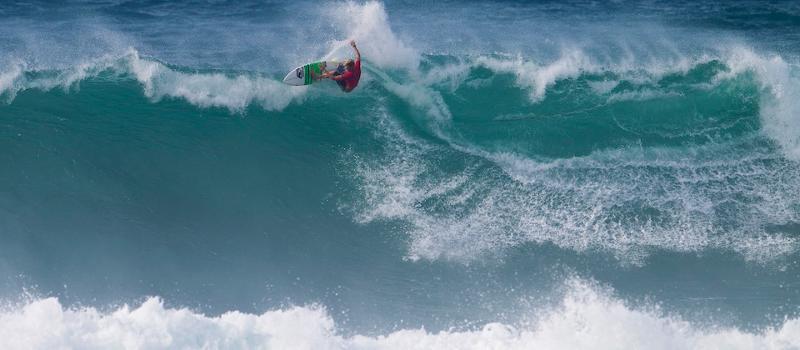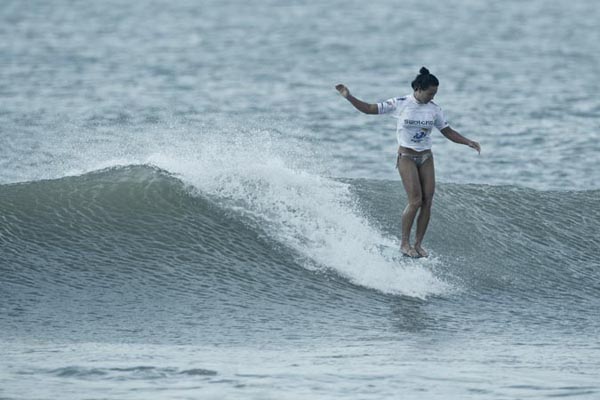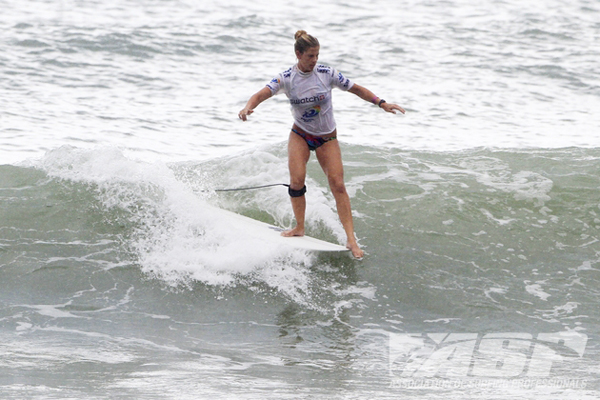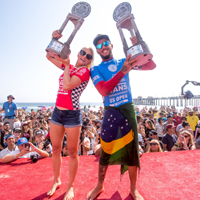
Surfing continues to go through unprecedented changes as the effects of the economy take its toll on what survives and what doesn’t, and new interests re-shape the traditional standards of an industry in major flux.
To start, on the cusp of news that Nike/Hurley will no longer be sponsoring mainland’s largest surfing event, the U.S. Open, Billabong’s option for a TPG buy-out fades, while the Vans Triple Crown, the crowned jewel series of surfing on Hawaii’s North Shore announces a $1 million cash purse—but no women’s events for the second year running.
The final kicker is that the Association of Surfing Professionals (ASP) generally considered the ruling body of the sport itself, and controller of surfing’s biggest tour has just entered into a “term sheet” with ZoSea Media, which means it’s about to be “owned” by an agency.
What’s wrong with the picture? A variety of things. In the past few years it seems we’ve been writing more and more about the sport of surfing and not necessarily because of its soulful nature and attraction among youth culture, but because of the complex business issues surrounding the industry.

The difficult economy had especially effected women’s professional surfing with lack of sponsorship dollars and continued lower prize money compared with the men’s purses at all of the events in 2012. Although lower purses for top pro women surfers is nothing new in surfing (a dirty little secret), it pales in comparison to other professional sports, especially, for example, snowboarding where prize money has usually been equal for males and females due to the sponsors, especially brands such as Burton which has always seen women competitors just as vital to the longevity and progress of the sport.
The issue hit the limelight during the Nike U.S. Open of Surfing in 2011 when Kelly Slater won a grand total of $100,000, to Sally Fitzgibbon’s $50,000, and again in 2012 this past summer with Lakey Peterson bringing home a purse of $15,000 compared with Julian Wilson, winner of the men’s division, who won $100,000 despite both men and women competing on the same wave.
Ironically, when it comes to revenue in this industry, most comes from the lifestyle around surfing, including apparel, footwear, and accessories which is due in large part to the women in the sport—and those that buy the fashion who are inspired to be surfers. In our Fall Youth Culture Study 2012 our special section on Action Sports reveals that for the 9th year in a row, more females ages 13-25-years old want to learn surfing than males in the same age group. This aspirational quality of the sport remains a huge market potential and many top surf manufacturers have tapped into this quite successfully (i.e., Roxy boosts Quiksilver’s revenues every time).
So when it comes to the Vans Triple Series boasting about its $1million cash purse, plus $30,000 Harley-Davidson, and $10,000 Nixon Watch to the Triple Crown Champ, it’s unfortunate there’s no women in the running for even a “Nike-U.S.Open-version” of 15% of the pot.
This raises the question, if the ante has been upped for prize money for men’s pro surfing, where are the dollars for the women pros? And how detrimental is it to the long-term health of the industry if women’s pro surfing events are limited or canceled when clearly more young women are inspired by surfing than young men?
This being said, we are excited about the Vans Triple Crown of Surfing, running from November 12-December 20, especially because 11-time World Champ Kelly Slater will be going up against defending champ John John Florence, and we will be reporting from the Reef Hawaiian Pro, Vans World Cup of Surfing, and final Billabong Pipe Masters (which retained the title sponsorship despite stocks crumbling), but it’s not nearly the same knowing there’s no women’s events in this series.
Things have indeed changed drastically. “When I think back, it’s pretty crazy,” says Florence of his early childhood years growing up watching the world’s best surfers compete in the Vans Triple Crown.
“I used to sit all day watching guys like (Kelly) Slater and Andy (Irons) battling it out. Then there’s all the crazy heats that have happened and the world title moments. Growing up and actually being a part of it when I was really young, and then surfing it over and over and finally winning it last year – that’s been a crazy, crazy, build up. There was a lot that happened building up to that moment, and then all of sudden I was winning it.”
The Andy Irons story…now there’s yet another element to consider in the coveted sexy world of this “soul-sport.”

Swatch Girls Pro China
What is quite interesting is how China has stepped into the picture for women’s surfing. Riyuewan Bay, Hainan Island held its first historic ASP event ever last year in China with the Swatch Girls Pro. From November 21-25, 2012, the event will be hosted again to crown the ASP Women’s World Longboard Champion.
Marco Vaccari, SWATCH Head of International Marketing told the ASP that they’re proud to once again host the SWATCH Girls Pro China.
“We’re thrilled to return to Hainan, China again in 2012 for the second SWATCH Girls Pro China,” Vaccari said. “Last year’s event was a huge success, with great surf, the crowning of the ASP Women’s World Longboard Champion and showcasing what fantastic athletes these women are. Hainan is a beautiful part of the world and the ideal location for SWATCH to host a world-class event.”
Lindsay Steinriede (USA) clinched the ASP Women’s World Longboard Champion at the SWATCH Girls Pro China last year after finishing equal 5th in a hard fought final day of surfing and she’s focused on going back-to-back.
“I don’t feel any added pressure right now going into the event as the defending ASP Women’s World Longboard Champion,” Steinriede said. “I’m ready to compete and will try to back up my title with another one. Last year’s event was an awesome experience. It was exciting going to a place I knew nothing about and I think we were all pleasantly surprised by the island’s beauty and with how well we were taken care of. I’m looking forward to heading back to China soon!”
ASP In Term Deal with ZoSea Media
So what does it mean when the ASP enters into a Term Sheet deal with ZoSea Media, which is founded by Paul Speaker, president of Time Inc. Studios and a board member at Quiksilver, and Terry Hardy, Kelly Slater’s manager (Slater, who is sponsored by Quiksilver)? How will this effect sponsorship of the world’s most prestigious surfing tour? What about media rights? And what’s this mean for surfing as a sport if the actual organization is “owned” by ZoSea?
Those answers are harder to come by so far. What we do know is that on October 5, the ASP announced that they had entered into a Term Sheet with ZoSea Media designed to enhance the organizational structure of the sport as well as the direction of professional surfing in the coming years.
“It’s an important time for surfing,” Kieren Perrow, ASP Surfer Representative, said. “The supporters of the sport have sacrificed a lot of time and energy into professional surfing, and it has brought us to our current position where we’re attractive to a larger market with the ability to take surfing to a whole new level. Everyone, from the surfers to the fans to the events to the sport, will benefit and it’s an exciting time for the ASP.”
According to the release, the formal closing of this transaction between ZoSea Media and ASP International is anticipated to be achieved by year’s end. “When we embarked on the experiment that is professional surfing, our goal was to create a dynamic, genuine sporting product while retaining the authenticity of the culture,” Rod Brooks, Quiksilver Event Director, said. “The progress made, not only by the organization, but in its ability to consistently push the high-performance boundaries of the sport is something we’re all very proud of. Surfing, as an act, is constantly evolving and the governing body must evolve and adapt to maintain relevance. We’re all very excited about where this next step will take us and extremely supportive.”
It will be interesting to see what results from this new ASP deal. As we started off at the beginning of this year reporting on the Bobby Martinez ban by the ASP in “How Surfing Is Going Through Its Own “Arab Spring–The Soul of Surfing Under the Spotlight,” to Matt Warshaw’s prediction in Surfer Magazine about the sport needing to “wake from its dream [tour],” this show’s not even close to being over yet.


